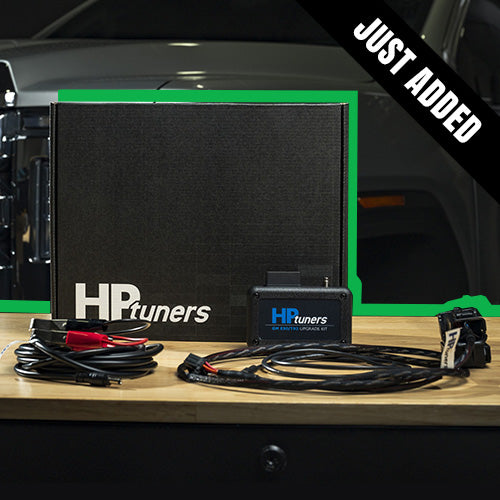

Big Three Wiring Upgrade for the 2001–2004 LB7 Duramax: Step-by-Step DIY Guide
What Is the “Big Three”?

The Big Three Wiring Upgrade strengthens your LB7 Duramax’s core electrical system by upgrading some core connections. It’s been popular for decades with the audio crowd, but what we’ve noticed at Alligator is how responsive older diesels often are to this and an afternoon of cleaning ALL the grounds on your truck. We’ve seen a couple hours of upgrading wiring and cleaning grounds solve everything from weird shifting to slow power windows.
Basically, you’re going to be upgrading three primary connections, theoretically lowering the resistance within the major players of your truck’s electrical and charging system. Those are:
- Battery to Alternator
- Battery to Chassis Ground
- Engine Block to Chassis Ground
This upgrade fixes weak voltage, improves cranking, and supports modern accessories like winches, lighting, and sound systems. On a 20+ year-old truck, it’s not just smart—it’s essential.
It’s also a pretty solid idea to consider changing our all your battery cables – internal corrosion between them raises resistance and can absolutely melt cables and make cold starts a challenge. The worst part is you can’t see this resistance, but if you notice your cables are warm immediately after a cold start, there’s a good chance you’ve got some tired cables.
Let’s focus right now on the Big Three, though.
Tools & Materials Needed
- (3) lengths of 4 AWG or 1/0 AWG OFC wire
- (6) copper ring terminals
- (1) inline fuse holder + 200–300A “Mega” fuse
- Wire loom or heat wrap
- Heat shrink tubing
- Crimper & wire strippers
- Wrench or socket set
- Zip ties
- Dielectric grease
- Wire brush or Dremel with brush attachment
Step-by-Step Instructions
STEP 1: Disconnect ALL Battery Terminals
Unhook both negative and positive terminals from both batteries. Don’t skip this—shorting a battery with a wrench is a great way to ruin your weekend and cook some computers. A friend of ours once smoked his TCM using the wrong pin out and a multimeter, imagine what a 13 mm in the wrong spot can do?
STEP 2: Battery to Alternator (Positive)
- Measure and cut wire to run from the alternator charge stud to the positive battery terminal.
- Crimp both ends, heat shrink, and install a fuse holder near the battery end.
- Mount securely with loom and zip ties away from heat.
(You can buy cables precut, or have a local shop crimp them up for you. If you’ve got a good NAPA nearby, they can usually cut and crimp to order, saving you some time, or use properly sized premade cables from any auto parts store…)
STEP 3: Battery to Chassis Ground (Negative)
- Locate a solid chassis ground on the driver-side frame rail.
- Strip, crimp, and attach one end of your wire to the negative battery terminal and the other to bare metal on the frame. Many times, you’ll already have a smaller length of wire going to the core support or inner fender – keep it. This is an additional ground and frankly, the more, the better.
- Apply dielectric grease after cleaning both contact surfaces.
STEP 4: Engine Block to Chassis Ground
- Find a clean mounting point on the lower engine block (passenger side near starter). This might be even be an intake bolt, or even one of the handful holding your alternator, A/C compressor, power steering, and so on. It’s not written in stone which one you ought to use, but find a good one.
- Cut and crimp a cable from that point to the same chassis ground or nearby bolt hole.
- Brush metal clean, apply dielectric grease, bolt, and secure.
That’s all there is to the Big Three, but locating and cleaning all the factory grounds is a really important step that IS going to take some more time, but WILL be worth it. We did this on a 2001 D-Max two years ago and a handful of electrical gremlins simply disappeared.
BIG THREE BONUS STEP: Clean Every Factory Ground While You're In There

The Big Three is powerful—but your factory grounds could be the real weak link. After 20+ years, corrosion and grime choke off voltage flow like cholesterol in a clogged artery.
Take the time to hit these OEM ground locations with a wire brush, dielectric grease, and a little love:
Full Ground Location List (2001-2004 LB7 Duramax)
-Engine Bay Grounds
- G102 – Lower front passenger side of the engine block
- G100 & G101 – Left side of the radiator core support
- G104 – Left front of the engine block
- G108 – Right rear bottom of the engine block
-Cabin Grounds
- G200 – Right A-pillar (under dash)
- G201 – Left A-pillar (under dash)
- G202 – Steering column support bracket
- G301 & G302 – Under front passenger seat
- G303 – Left C-pillar (crew/extended cab)
- G304 – Right B-pillar
- G307 – Right C-pillar (crew cab)
-Chassis & Rear Grounds
- G300 – Driver side frame rail near body mount
- G401 – Left rear body mount under bed
- G404 – Fuel filler neck grounding strap
Final Step: Reconnect & Test
Reconnect batteries. Fire it up. Test voltage with a multimeter—14.2–14.8V is golden. Crank your stereo, lights, and HVAC. Voltage should hold steady.
Why You’ll Love This Upgrade (and What Comes Next)
The Big Three isn't flashy, but it fixes problems you didn’t even realize were electrical. With rock-solid voltage, your LB7 becomes more reliable, starts stronger, and powers accessories like it just rolled off the line.
But here’s the best part: now that your electrical system is solid, it’s time to unlock performance.

Enter: Edge Juice with Attitude CTS3 Tuner
This isn’t just a tuner—it’s a full command center for your Duramax.
- Power Gains: Up to 120 extra horses at the push of a button, with five on-the-fly levels.
- Monitoring: Boost, EGT, trans temp, coolant temp—you name it, it’s on the screen.
- Protection: Built-in safety features like defueling on high temps keep your truck alive and well.
- Touchscreen Interface: The CTS3 display is slick, intuitive, and fully customizable. Looks like it belongs in a 2025 truck, not a 2003.
And here’s where it ties back: none of that works well if your electrical system is garbage. The Big Three lays the foundation for stable voltage and reliable sensor readings—two must-haves for any tuner to function at its best.
The Edge CTS3 also eliminates the need for separate gauges, saving you money and simplifying your dash setup. You can ditch that jungle of wires and pods and roll with one sleek screen that does it all.
Finish the Job Like a Pro
If you’ve already upgraded your exhaust (like the MBRP 4” downpipe-back we love), knocked out the Big Three, and cleaned your grounds, the Edge Juice CTS3 is the next logical move.

Together, these upgrades form the backbone of a serious build:
- Exhaust = better breathing
- Electrical = cleaner power
- Tuner = controlled performance with real-time data
It’s like giving your LB7 a full systems reboot—and setting the stage for years of dependable, grin-inducing driving.
Need help deciding if your truck is ready for tuning? Want to bundle the Big Three components and CTS3 tuner into one package? Reach out to the Alligator team—we’ll make sure your LB7 gets exactly what it needs (and nothing it doesn’t).
Learn More
Was this article helpful? Pass it on
- Choosing a selection results in a full page refresh.
!









